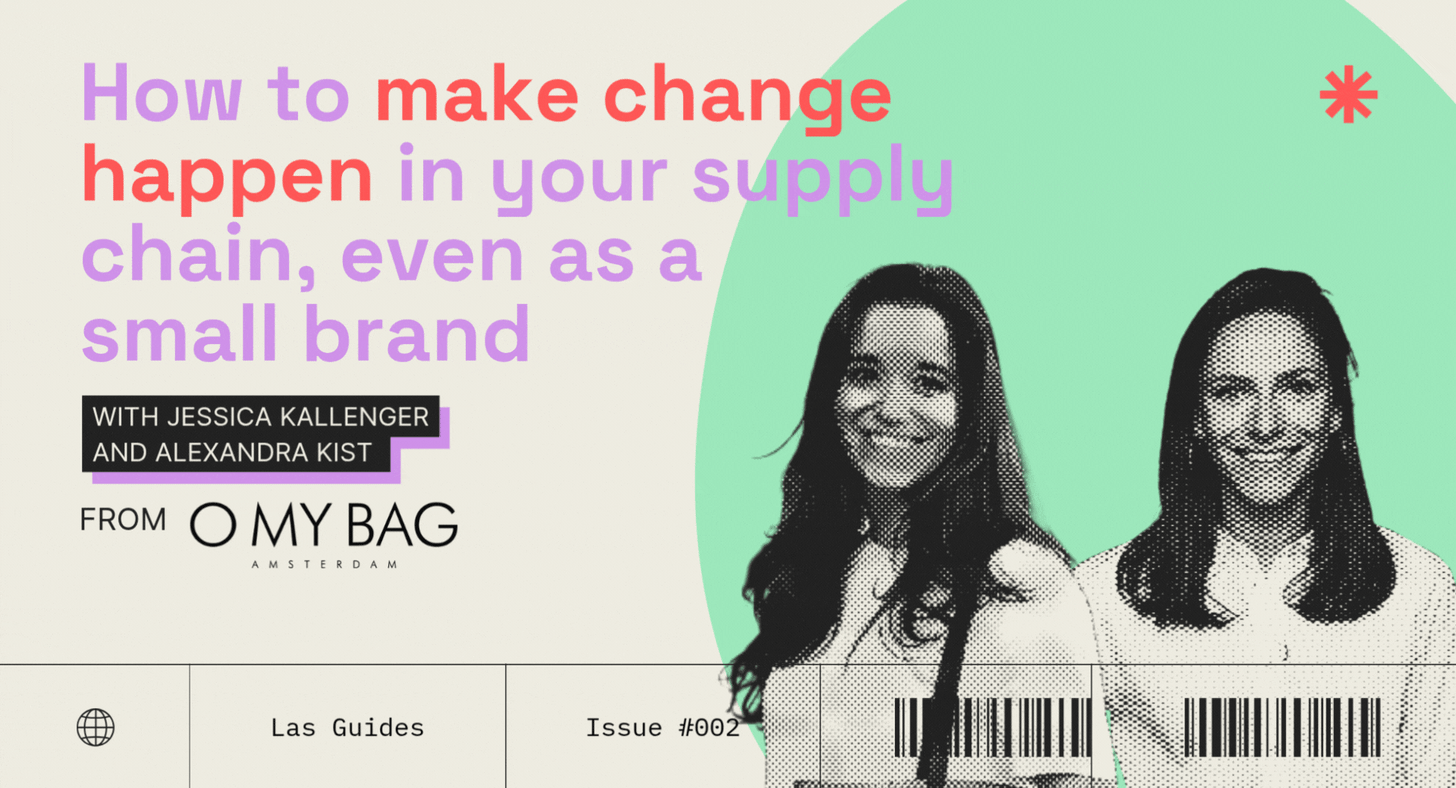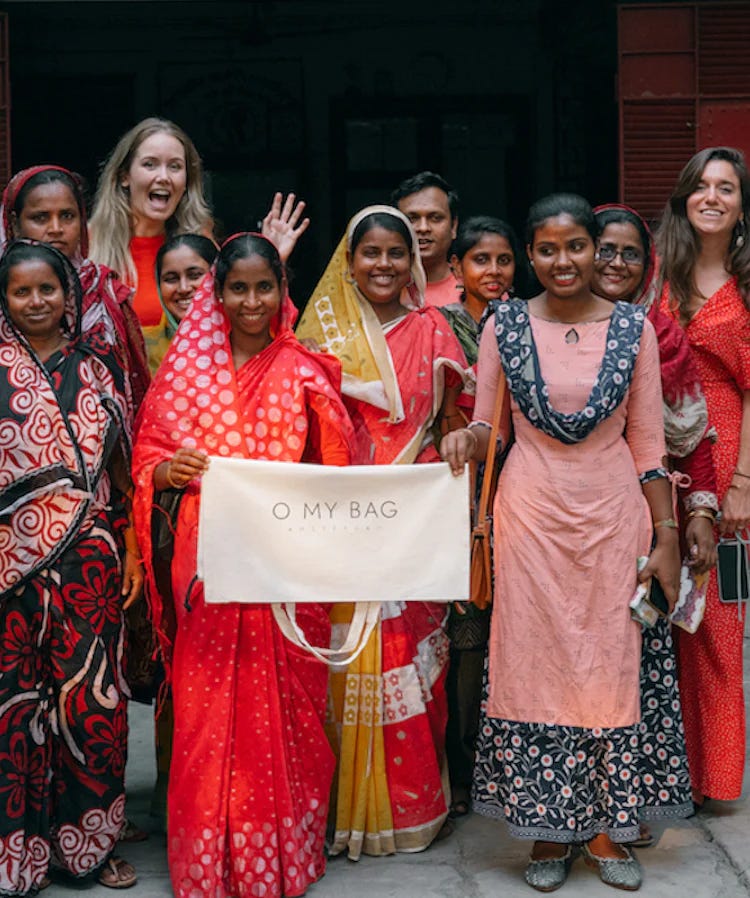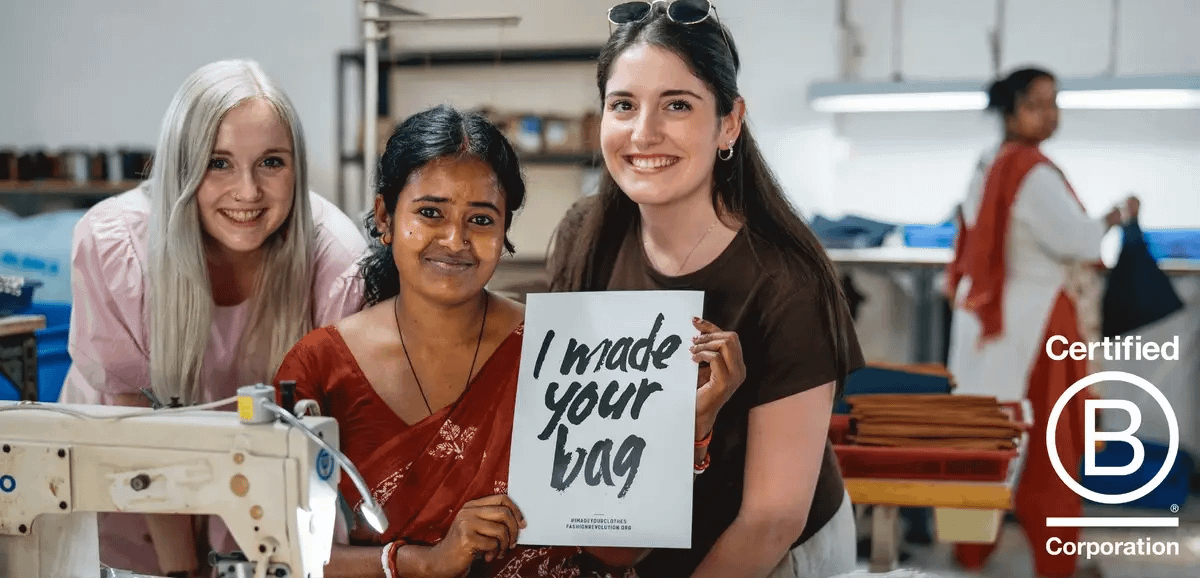Issue 02: How to Make Change Happen in Your Supply Chain, Even as a Small Brand - with O My Bag's Jessica Kallenger and Alexandra Kist
A practical, brand-tested approach to making big changes with small resources.
Welcome to La Purpose Brand 🫒. I’m Donatela and each how-to guide breaks down how bold brands are driving real impact, regardless of size. Honest stories, practical strategies, and a little rebellion.
Jessica and Alexandra are some of the most welcoming people I've ever met, and they're incredibly passionate about the impact they're making at O My Bag. They genuinely love helping suppliers and other brands, so it was really enjoyable to pick their brains about how they've managed to achieve what they have.
Introduction
I was told suppliers wouldn’t make the change. At least, not for an SME brand, not if you’re only 1-10% of their revenue, not if you don’t own the factory. But I was wrong. Suppliers will change, if you approach it the right way.
In fashion, over 90% of carbon emissions come from the supply chain. More than 75Mn people work in those supply chains, and fewer than 2% earn a living wage.I think we all understand that’s where change needs to happen. But most brands, big or small, don’t know how to make it stick.
With regulations like ESPR on the horizon and consumers demanding real transparency, the pressure is growing. Brands are expected not just to make bold claims but to back them up with action. That’s challenging enough if you’re a giant. But what if you’re a small team with limited leverage?
This guide is for you: the sustainability leads, sourcing managers, buyers, designers, legal teams, and founders doing the real work of making supply chains more ethical, more resilient, and more human.
To understand what it really takes, I spoke with Jessica Kallenberg (Head of Product & Sustainability) and Alexandra Kist (Sustainability Manager) at O My Bag, a leather goods brand based in Amsterdam.
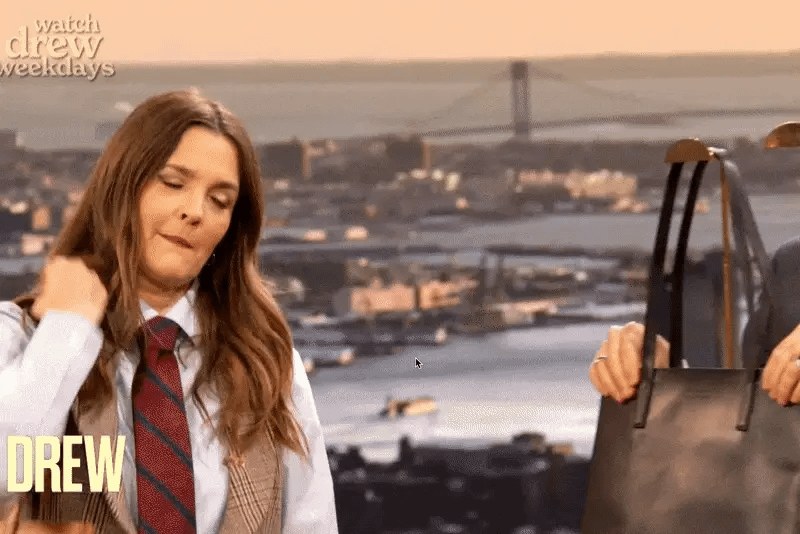
Yes, they’ve been featured on The Drew Barrymore Show. But more importantly, they’ve become one of the most respected sustainable brands in fashion. O My Bag is a certified B Corp that has:
Positively impacted over 22,000 lives through social programs in India
Paid more than €57,000 in living wage premiums
Created over 1,000 fair jobs through supplier partnerships
Diverted more than 2,400 bags from landfills through their resale program
They don’t own their factories. They don’t have an on-site team. And yet, they’ve shifted supplier behavior through trust, consistency, and collaboration.
So, let’s learn from them about how to enact change in your supply chain, even if you are a small brand.
You made it. Welcome to the community. Ready to become pen pals? Subscribe below and let's start the conversation.
The Guide
Step 1: Don’t Just Source, Scout
This is something that SME brands struggle with, a lot. Anyone who has tried to find sustainable suppliers knows the struggle is real. They may not have the right certification, things look very different on the ground, or the unexpected happens, like last-minute cancellations. Here are some steps to get you started:
Start with certification lists (as a filter, not a guarantee). Use certification lists like the Global Organic Textile Standard (GOTS), Oeko-Tex, Textile Exchange, SA8000, and Leather Working Group (LWG) to help narrow the pool, but don’t rely on them alone. Certifications can’t tell you if a supplier matches your values, or just checking boxes. Reach out and learn more about their practices. Bonus if you find a cluster of them close to each other, because the next step is to…
Visit the potential suppliers in person. Suppliers are often located near each other in towns with a shared craft or tradition. When you’re on the ground, ask around, you’ll get names. But most importantly, visit in person to get a real sense of the supplier and whether they’re the right long-term partner. Don’t just stay in the marketing room; spend time on the production floor. Ask yourself: Do they align with your values? At O My Bag, they look closely at questions like:
What is the relationship between management and workers?
What does the production floor look like on an average day?
Do the workers seem comfortable?
Only by visiting them we found the producers for us, because then you see how they interact with their workers on the production floor. We always say when new suppliers reach out to us that the first thing we'd like to see, if we're interested in working with us, is the factory floor. If we cannot see the factory, then we are not even talking.
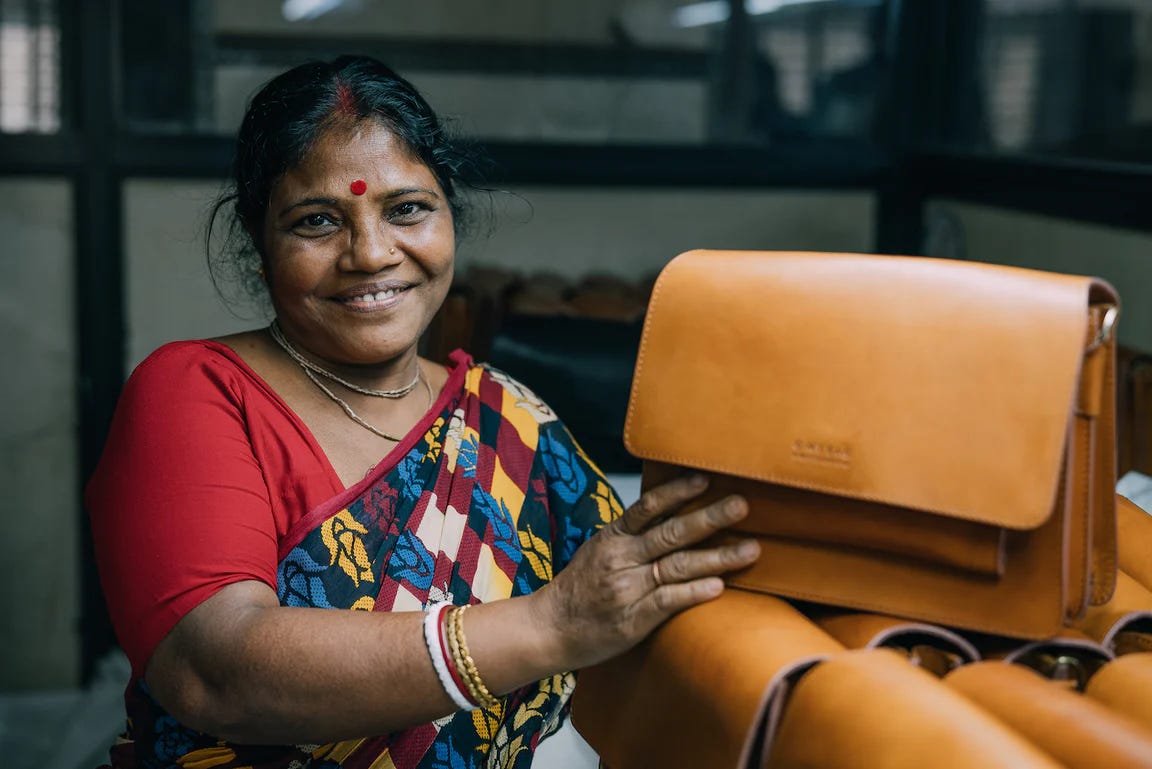
Suppliers might not be perfect at first, but if the values are there and they’re open to growing with you, that’s what matters. For example, when one of O My Bag’s factories didn’t have the required certifications, they didn’t walk away. Instead, they rolled up their sleeves. After spending time on the ground and seeing the factory’s genuine commitment, they knew they had a real partner. But independent verification still mattered. Rather than taking a hardline “no cert, no order” stance, they chose to support the factory through the long and complex certification process, because that’s what partnership looks like.
Ask around. In O My Bag’s case, most of their suppliers have come through word-of-mouth. They even recommend reaching out to other brands for referrals, many are happy to share. In fact, O My Bag takes pride when their recommendations help bring more business to their partners.
Their first tannery experimenting with chromium-free tanning came through a personal connection. But it was on the ground where O My Bag’s founder, Paulien Wesselink, met the producer.
I was so pleasantly surprised by the beautiful surroundings and the warm welcome. At that point I had visited over 20 producers and this was the first time I saw so many smiling women, and also the person leading the organization was a woman! I instantly knew that this was the place O My Bag’s should be made.
As they grew, they needed more partners. That’s when their India-based quality partners stepped in. They knew exactly where to look, and who to trust. Nothing beats the local or “on the ground” perspective.
Step 2: Build Real Relationships, Not Paper Ones
We’ve all heard it: “treat suppliers like partners, not vendors.” But it’s true. Anyone can place an order. Building a real relationship takes time, consistency, and a genuine interest in how they work. That’s how you build the foundation for big change.
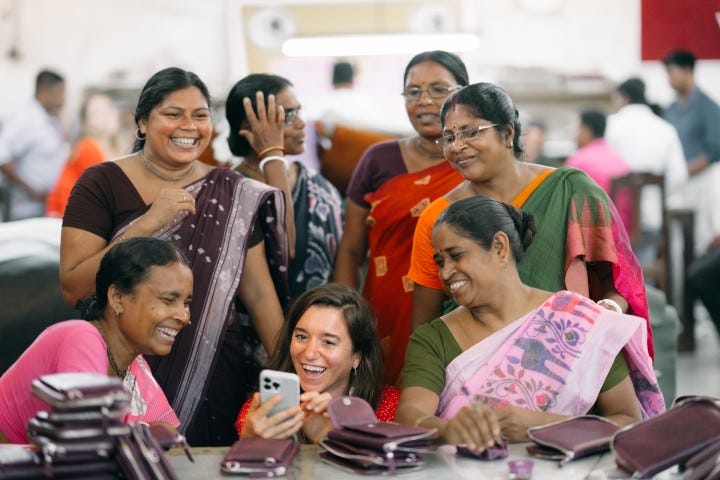
Set clear expectations early. When O My Bag brings on a new supplier, they’re clear from the start. It isn’t just about placing orders. It’s audits, surveys, social and environmental reporting, and real change, like installing solar panels or running leadership training for women. Most suppliers say yes, because they want the business. But over time, through honest and constant conversations, and shared learning, they start to understand the depth, and, the purpose, behind it.
You start talking to them about the benefits for every part involved. Having proper temperature isn’t only good for the workers, but it also means higher quality, less rejections, and saving money. By talking through the benefits for the workers, us and the producer, they can see why the change is important.
Be accountable and make the commitment. Change takes time, and so does building trust. That’s why O My Bag commits early and stays consistent. Even when they were a small slice of a supplier’s revenue, they showed up. When they onboard a new supplier, they commit to a one-year partnership and begin placing orders with a two-way Code of Conduct that also holds them accountable (e.g., not cancelling orders). They do this with the understanding that change is part of the deal. If progress doesn’t happen within the agreed timeline, they walk. That commitment and early trust is what opens the door to bigger wins.
Be present, physically and emotionally. This came up again and again in our conversation. Most brands stop by for a day or two, then disappear. O My Bag shows up multiple times a year, for 2 weeks at a time. They are on the factory floor, alongside workers, living their day to day, and gaining deep understanding. That approach builds trust, and that trust makes space for harder conversations, new ideas, and long-term change.
We like working with most of our suppliers in the Leather Complex in Kolkata, just a few minutes drive away from each other. This means that every day during our visits we spend as much time as possible on the production floor of each of the factories. We very often come into the factory while our account manager is not even there, and they're fine with us just walking in and out. For me that's a really good example of mutual trust again.
The first time you come, they show you the production floor. The second time, they take you out to dinner somewhere. The third time, you have dinner at their homes with their whole family. Our relationship has grown so much that I have attended the wedding of our supplier's relatives and visited the home and family of one of the workers in the factory. We are interested in each other's lives. We understand that they also have a business to run and always try to understand each other. It's really a relationship that we're building together.
Step 3: Change Through Collaboration, Not Control
Relationship built? Good. Now the real work begins. You start slow, taking some first steps together like running a pilot, or fixing a few issues. But real change? That comes slowly. It takes partnership, patience, and a long view.
Start slow, and trial and learn. Change takes time. Brick by brick. Trial by trial. What matters is that you keep moving forward. O My Bag started small, testing ideas, learning what works, and building trust as they go. That approach has paid off. Today, they’re able to ensure living wages for their Tier 1 workers. They run the numbers carefully, calculating the gap, working out their share, and figuring out how to distribute the premium. The process is collaborative, detailed, and rooted in the reality of each factory.
Our responsibility goes beyond paying a premium. We collaborate with local NGOs to ensure it reaches the right people and provide training on living wages and payment systems for factory owners. We also educate workers on financial management, helping them to manage their income and save for their families.
Listen to their perspective, and co-create. What seems simple from your desk might be a lot harder on the ground. Suppliers have their own realities, and O My Bag gets that. That’s why they start with dialogue, not demands. They don’t drop a checklist and a deadline. They ask questions, listen, and build solutions together. They bring in local consultants, invite feedback, and co-create a plan that actually works. That open dialogue is how suppliers go from reacting to requests to bringing their own solutions to the table. Now, some suppliers come to them with improvement ideas. That’s when you know it’s working.
When I was in India, a supplier said to me, ‘Hey, should we do this differently?’ That’s when you know it’s working. It’s no longer about enforcement. It’s about collaboration.

Choose your battles, but stay consistent. You won’t fix everything at once. Sometimes the timing’s off. Sometimes the supplier just isn’t ready. And that’s okay. What matters is showing up consistently. Keep asking about what is top of mind (e.g., safe water, feedback systems, living wages) and eventually, things start to shift. O My Bag didn’t roll out their amazing living wages program overnight. It took years of trust, small wins, and steady groundwork. Then came the bigger moves.
Production in India presents its challenges, and implementing social projects and transforming work processes adds another layer. For good reason one of O My Bag's core values is 'Change is constant, flexibility is essential'. It's crucial to remain adaptable in the face of occurring challenges.
Final Reflections
So, what can a small brand actually do? A lot, it turns out.
You can listen. You can show up. You can build relationships that go beyond a PO.
O My Bag didn’t wait for leverage. They weren’t a big buyer. They didn’t own factories. They just started, with curiosity, commitment, and the belief that good business should also be good for people. They found the right partners. They showed up. They stayed consistent. They built change, brick by brick.
Their wish for the industry?
That we can inspire other brands to see that it’s possible to sell high-quality, beautiful products and still do good for the environment and people. It’s not easy, but it is possible. I hope everyone can find their own way to do it.
No one’s saying this is easy. It’s not. It’s slow, messy, and not for the faint of heart. But it’s possible. And it’s worth it.
If you take on the challenge, remember: your suppliers are people too, with their own constraints, pressures, and goals. Change doesn’t come from control. It comes from collaboration.
And if O My Bag can do it, so can you.
Let's be friends: Follow me on LinkedIn (where I share the other stuff or short and punchy versions of this stuff).
Found your place? Subscribe to La Purpose Brand 🫒, and share it with friends.
What keeps you up at night? Tell me by filling out our survey, and I will cover it next.





